Hospice Tools CRM
We joined hands with Hospice Tools to create a Custom CRM for hospices and palliative care organizations.
Overview
Hospice Tools CRM is a specialized customer relationship management software designed specifically for hospices and palliative care organizations. Its primary purpose is to help these organizations manage patient relationships, monitor their day-to-day operations, streamline and automate the required procedures, and enhance communication among staff, patients, and families.
Hospice Tools CRM’s main objective is to improve operational efficiency and internal communication so hospices and palliative care organizations can focus on their main task: providing high-quality care to their residents.
Services
- Design and Development
- Maintenance and Enhancements
- Performance Optimization
- Data Integration and Automation
- Search Engine Optimization
Services
- Custom CRM Design and Development
- Custom Feature Development
- Data Migration and Automation
- Design & User Experience (UI/UX)
- Integration with Existing Systems
- User Training and Support
VISIT
WEBSITETechnologies and Tools

AngularJS
ASP.NET 6
Azure Blob Storage
Azure Functions
React
Project Results
A Comprehensive CRM that meets client objectives and covers all aspects of hospice and palliative care management.
One-of-a-kind Hospice CRM that is available in desktop and mobile versions.
Organized statistics and reports that enable quick decisions.
User role-dependent data access and smoothing task scheduling
Project Results
A Comprehensive CRM that meets client objectives and covers all aspects of hospice and palliative care management.
One-of-a-kind Hospice CRM that is available in desktop and mobile versions.
Organized statistics and reports that enable quick decisions.
User role-dependent data access and smoothing task scheduling
Challenges
The project required the use of ASP.NET 6, which is quite uncommon for projects of this size and scope. It took time to find the necessary support as ASP.NET Core is a more common technology for such projects.
The client prioritized data encapsulation. This means that the client wanted to segment data and limit access according to user roles. When we enabled Global Admin login, it disturbed segmentation. Unexpected structural issues started popping up after this implementation.
Solutions
Leveraged Organizational Learning
We leveraged internal expertise and thorough research and development to ensure the project is successfully developed in ASP.NET 6.
Iterative Testing
We handled this issue through iterative testing. We worked on the access layer until all user roles could access data allowed to them. With each iteration, we improved the structure and robustness of the system.
Key Features
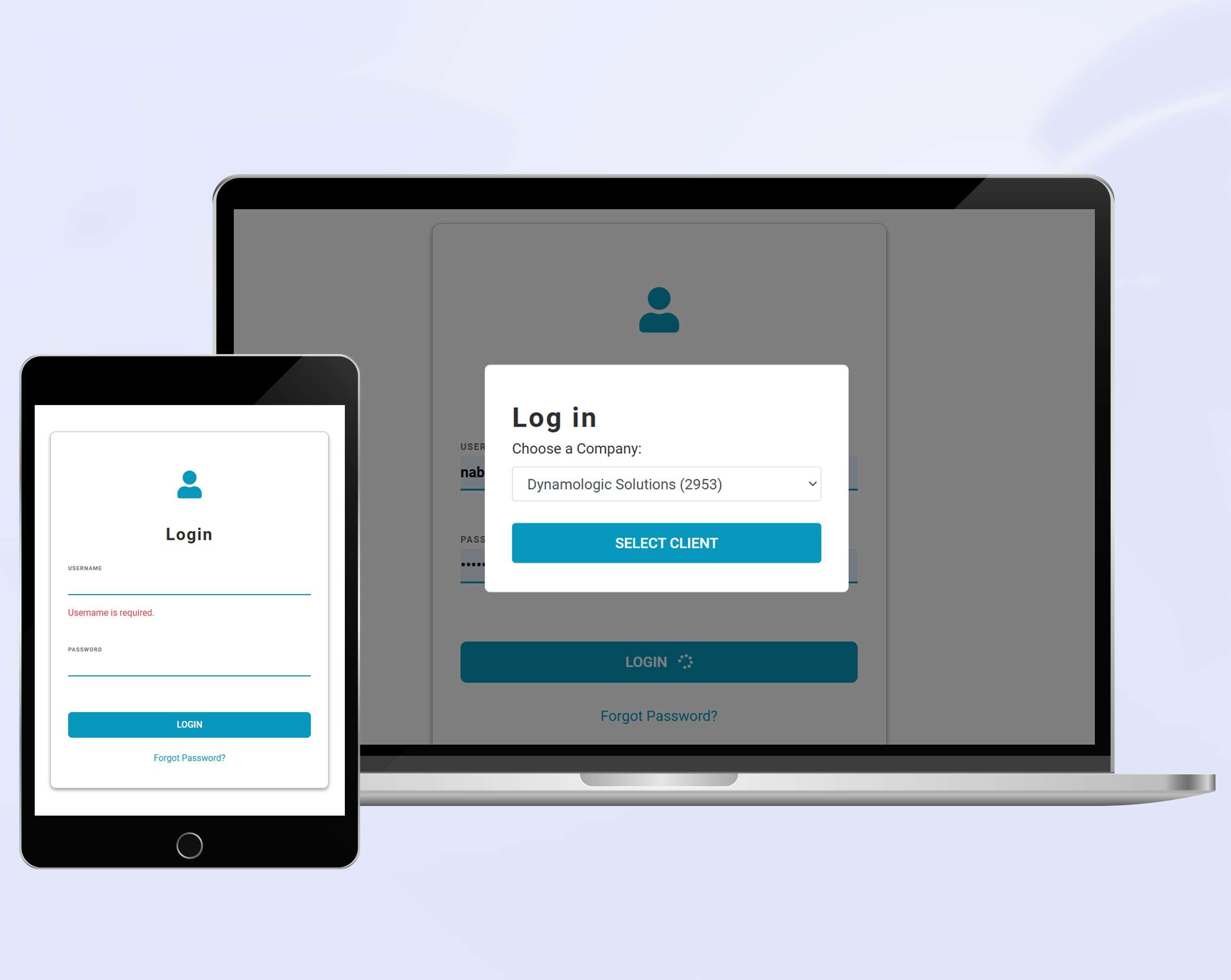
Simple is Always Better
We kept the design clean and simple so users can navigate the CRM easily. Our goal was to reduce onboarding time so that Hospice Tools could start using the CRM immediately. The simple yet intuitive design ensures that the usefulness of the CRM is not hindered by a complicated UI.
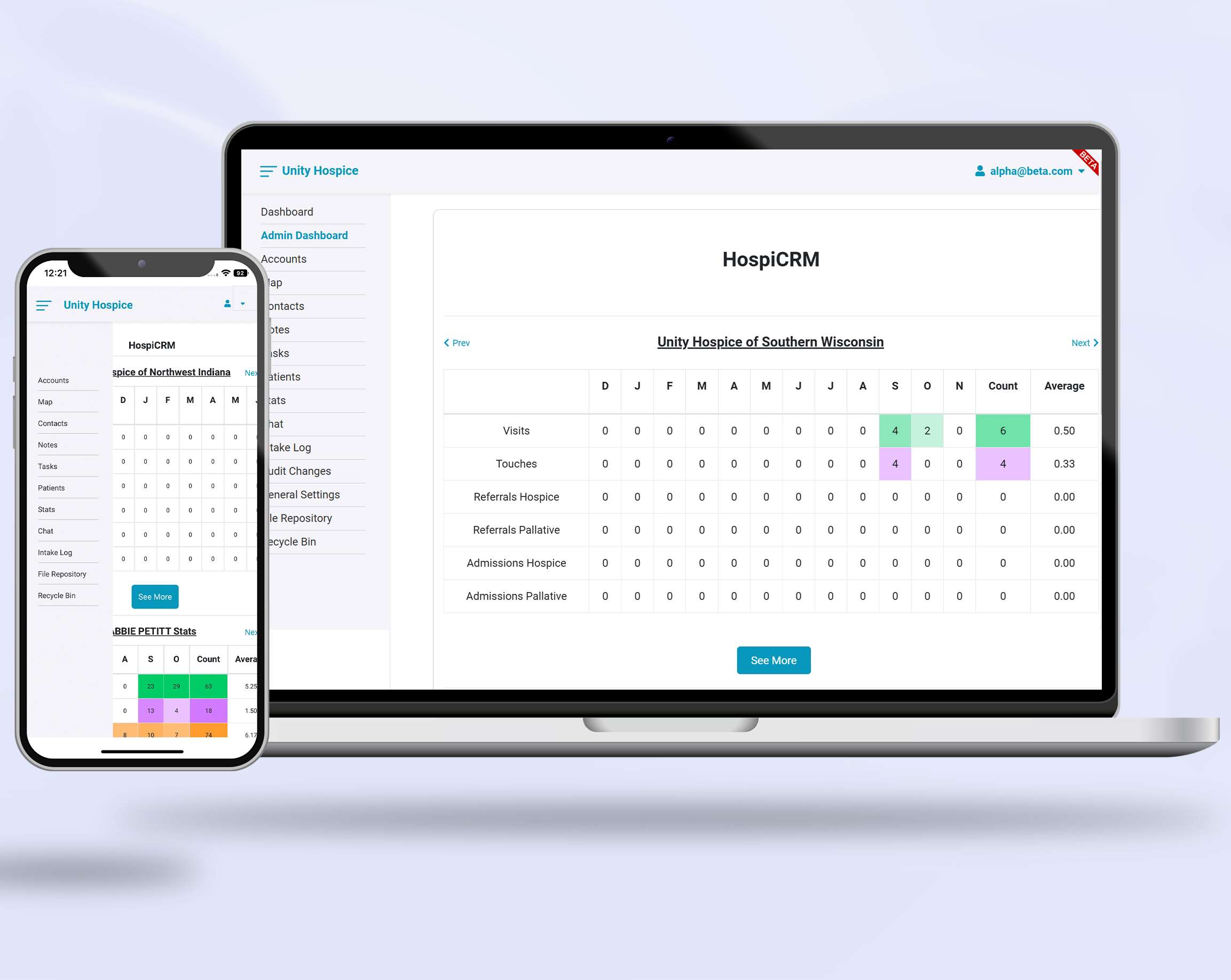
Increasing Efficiency with Multiple Offices and Client Access
Our CRM allows hospices greater flexibility and ease of navigation. Users can access the operations of various offices of the same client and different clients within the system. This feature is available according to role permissions and access levels.
Global Admins have the highest access level. They can view all data and switch between clients easily.
Admins have limited access. They can view and manage the data of a particular client. If the client has multiple offices, Admins may be able to access the data of all offices of the same client. Admins can see detailed information on all CRRs on their dashboard, providing a comprehensive overview of CRR activities and performance.
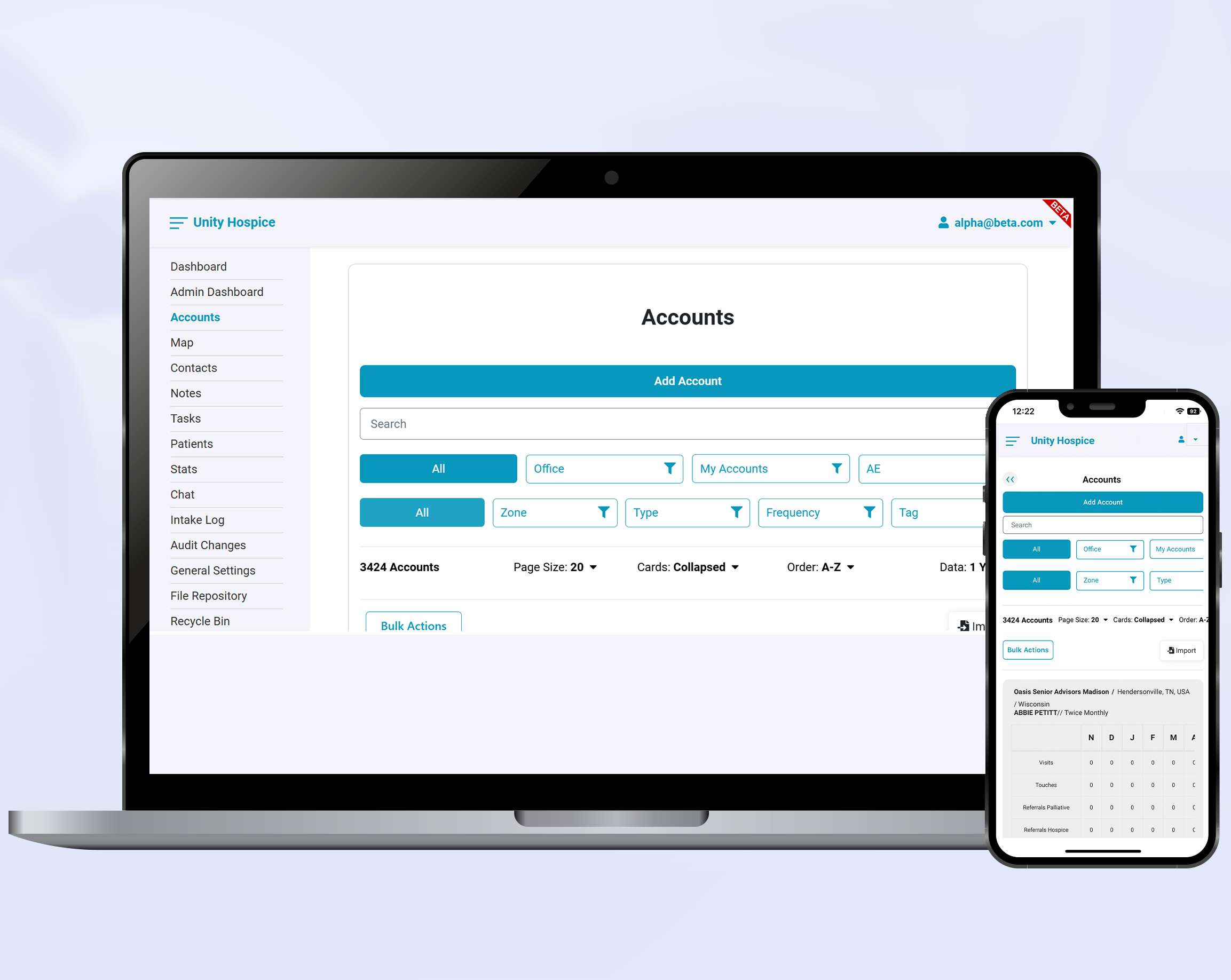
Personalizing Care with Patient Management
The core objective of a hospice or palliative care organization is to provide high-quality care to its residents. Thus, improving patient management was of critical importance while developing this CRM.
We introduced a centralized and cohesive patient management process in which patients were added via an “Intake Log,” and at the same time, a CRR, a person responsible for the patient’s care, was assigned to the patient. Moreover, all patient activities were saved as “Notes” in one location, which increased convenience and accessibility.
With patient information at their fingertips, hospice staff was able to improve care standards.
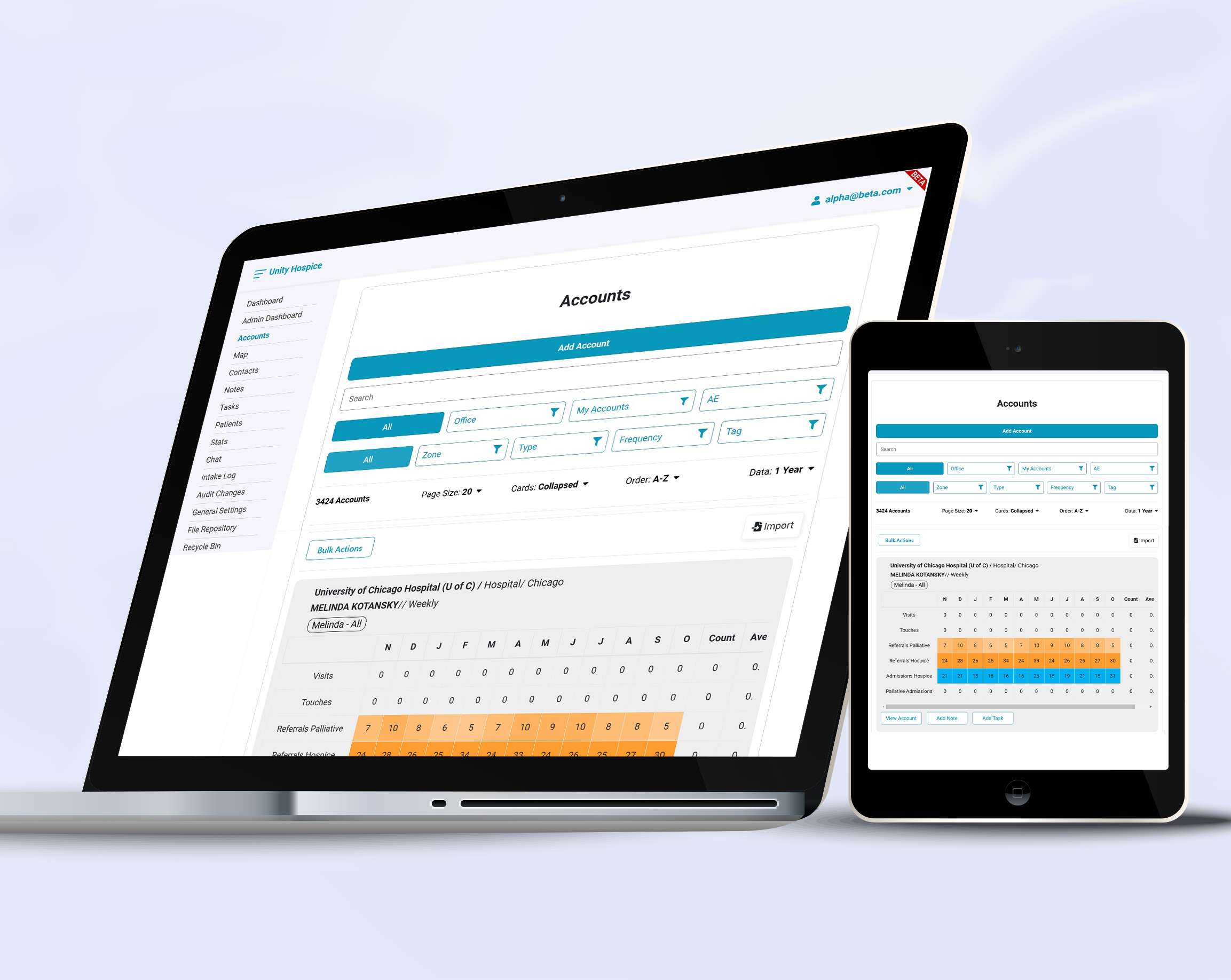
Providing Well-coordinated Care with Referral Management
Individual physicians, clinics, and hospitals refer patients to hospices and palliative care organizations. We developed a system that categorized all patients according to their referral source (the physician, clinic, or hospital that referred them).
This provided several benefits to the hospice – firstly, they were able to view all their referrals in one place. This organized view allowed them to identify sources that were more beneficial than others. With this information in hand, organizations could focus their resources on strengthening more valuable partnerships.
More importantly, it helped improve communication between the hospice and referring source – reducing the patient intake time and providing timely and well-coordinated care.

Scheduling and Resource Allocation
The Hospice Tools CRM allows the admin staff to allocate resources more efficiently. A CRR, a person responsible for providing care to a patient, is assigned to each patient upon intake. We leverage user role management, established relationships, and added search and filter capabilities to allow Admins to select available resources and assign them to patients while avoiding scheduling conflicts.
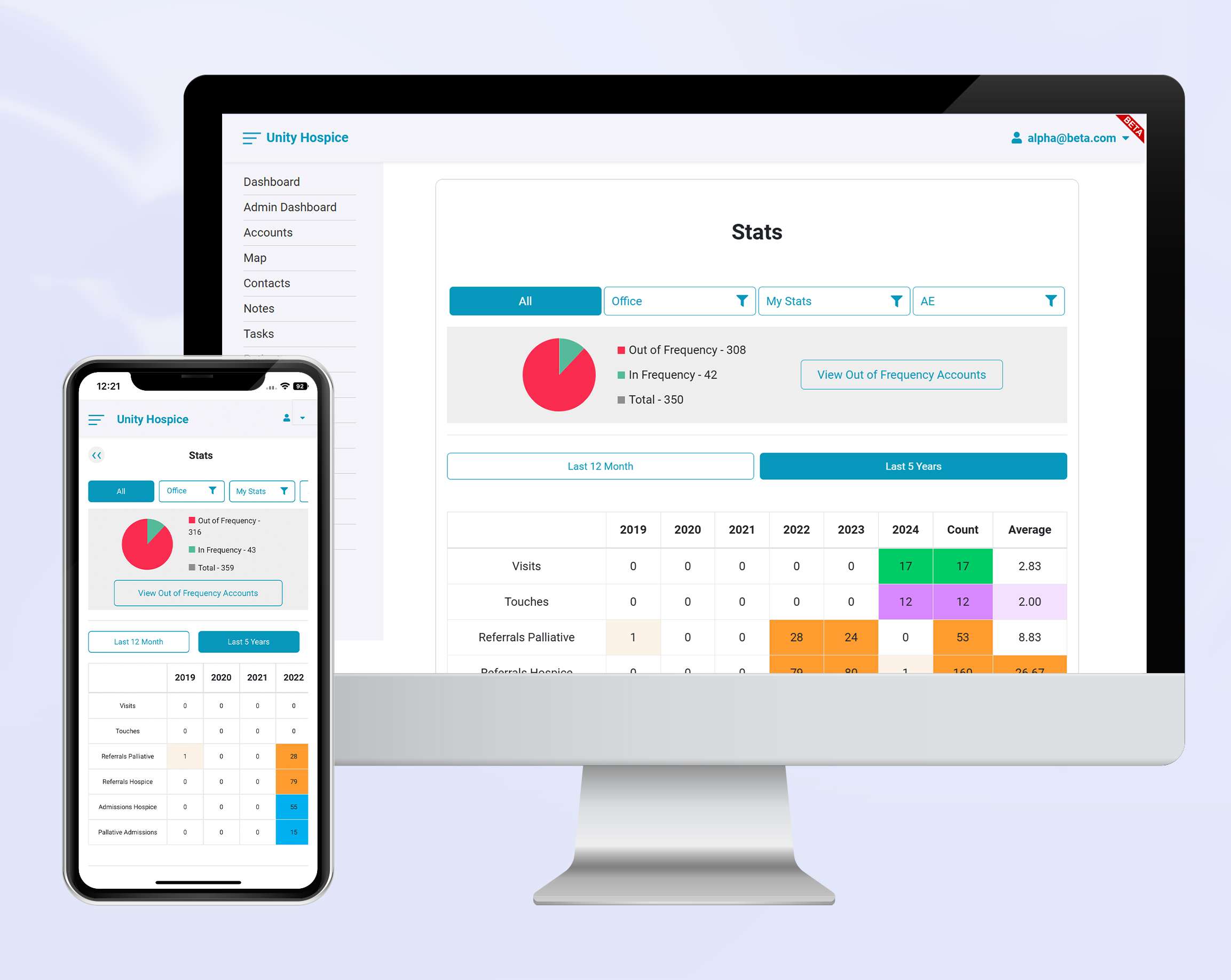
Improve Productivity with Reporting and Analytics
How well does a CRR perform? How many visits, calls, emails, admissions, and palliative care services do they take on? Now, hospices can find this with detailed CRR Performance Reports under the Stats tab on the Dashboard. These reports provide a comprehensive view of each CRR’s activities, allowing the organization to decide the effectiveness with which CRRs provide patient care.
Explore More
The case studies in this section have been handpicked to showcase our best design and development projects. Each case study shows how we used industry-leading practices to transform our client’s idea into a working project.
© 2025 Dynamologic Solutions All rights reserved.











